What animal is digging holes in my yard? 5 pests that could be the culprit
These pests could be the cause of the mysterious holes
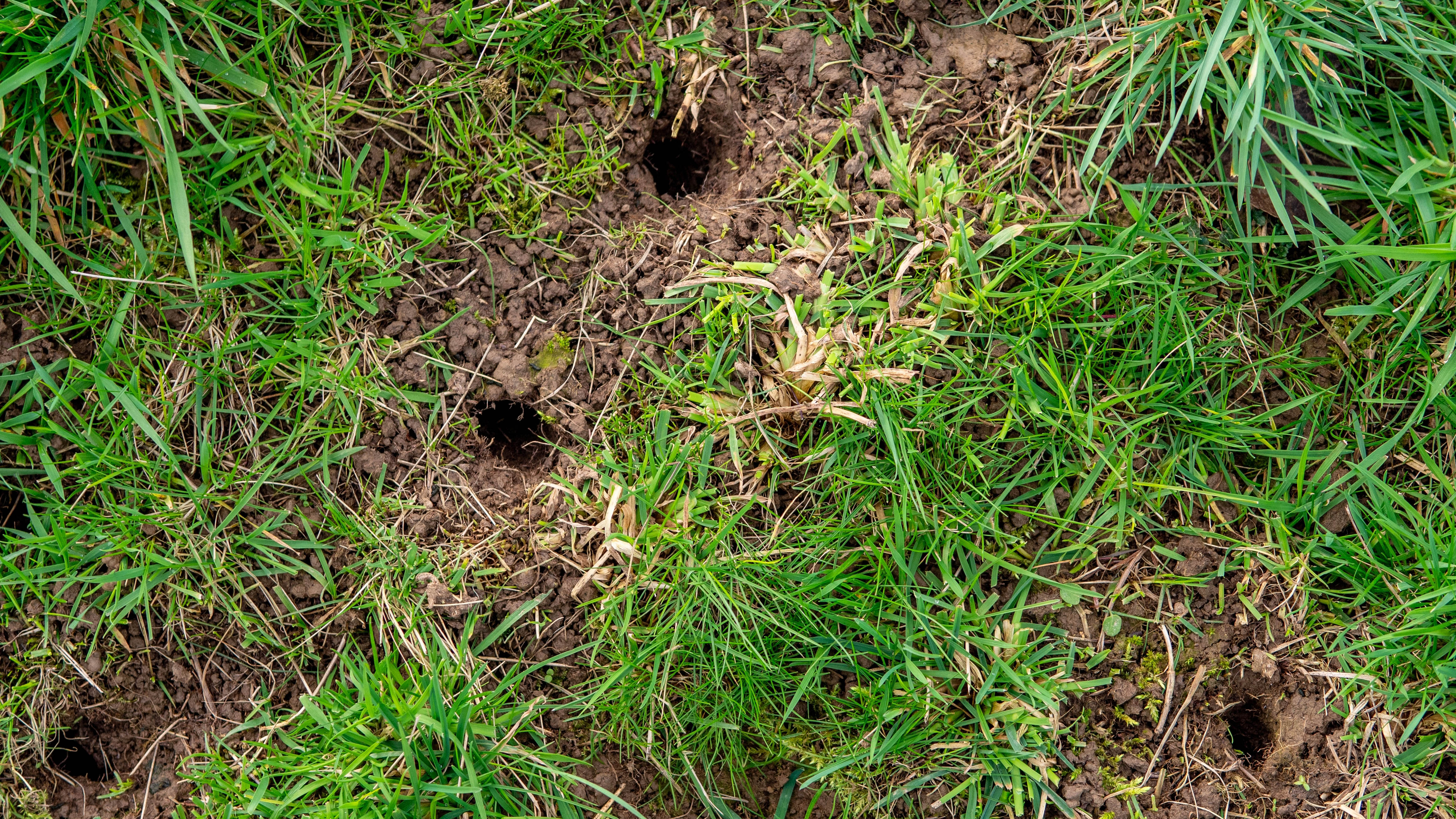
There’s nothing worse than finding unsightly holes dug into your green, lush lawn. This is especially when you’ve spent all of your time and efforts in making your lawn look amazing for summer.
And if you haven’t spotted any pesky culprits (yet), you’ll probably be wondering what animal is digging holes in my yard?
Typically, you might be able to guess the pest by the size and shape of lawn holes, to determine what animal has been digging them.
So from groundhogs to moles, here are some of the most common pests that dig holes in your yard. Plus, how to prevent them from coming back.
Lawn grubs
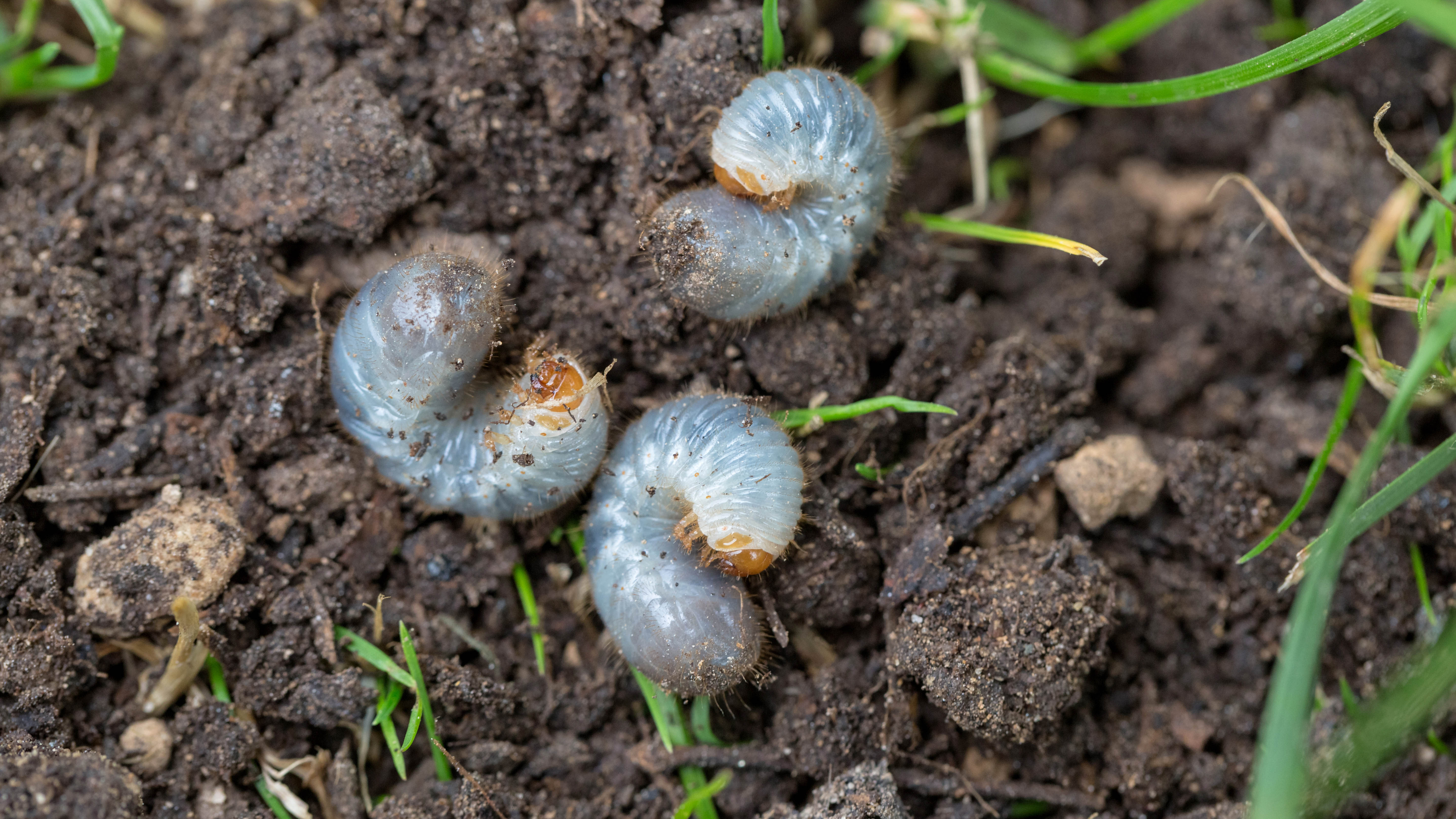
If you are noticing a lot of mound-free holes, this could be the handy work of lawn grubs. Essentially, grubs are baby insects – also known as larvae. As they develop into adult grubs, these will eat their way through grass roots, ripping up the lawn and causing the grass to eventually die. In which case you’ll probably need to know how to revive dead grass.
While grubs are more active during summer, obvious signs are plenty of C-shaped, white grubs in the soil, if your grass feels spongy or if grass has dry, irregular patches. Quite often, you could see a brown spot up to 50mm across with a hole in the middle where the critters hide during the day.
Luckily, there are effective ways to get rid of lawn grubs for a pest-free backyard. Ranging from encouraging natural predators like birds to feast on them, to spraying organic pesticides such as Neem oil.
Sign up to get the BEST of Tom's Guide direct to your inbox.
Get instant access to breaking news, the hottest reviews, great deals and helpful tips.
Groundhogs
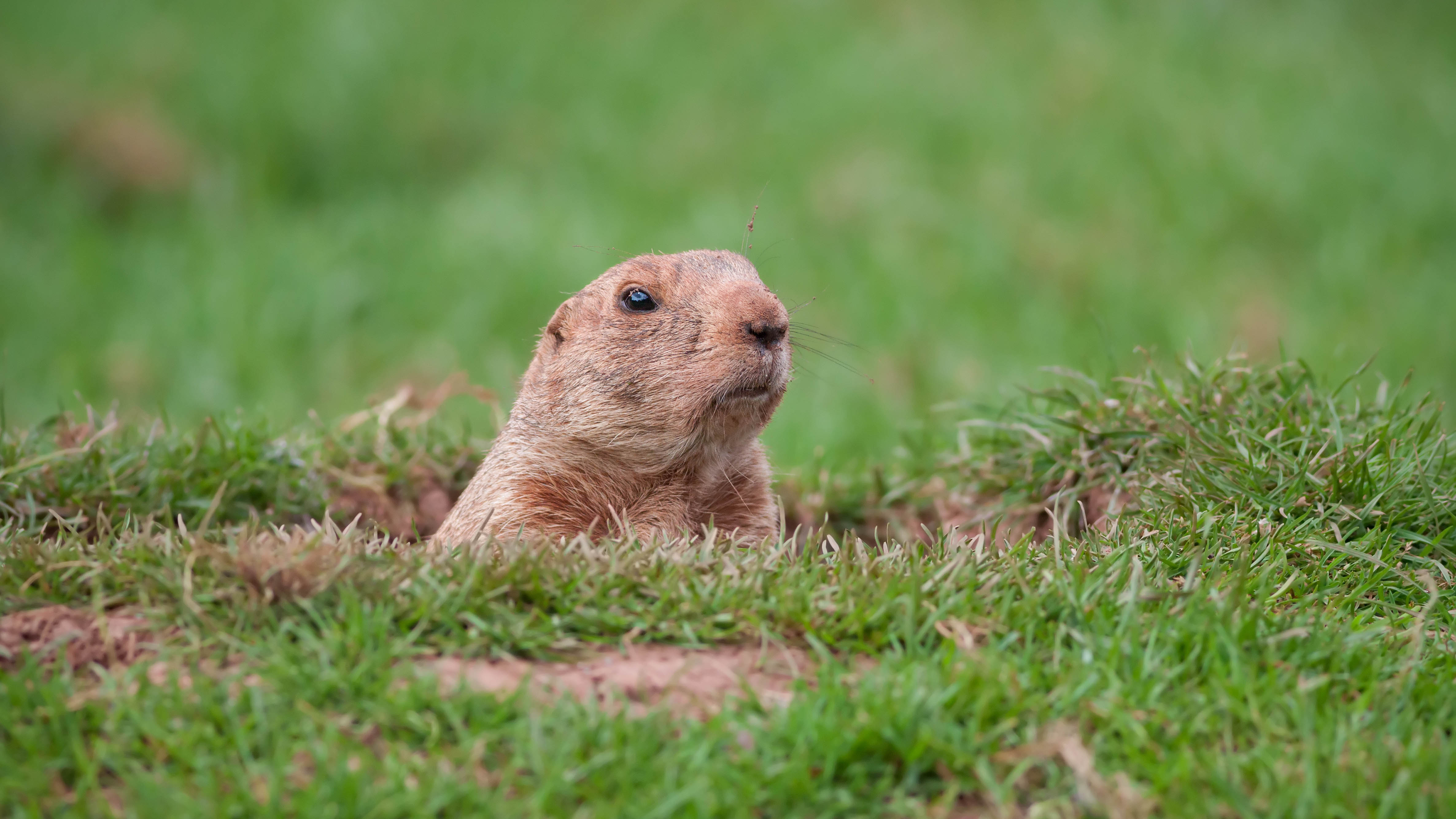
Spotting larger holes in your lawn can be alarming, and one culprit could be the troublesome groundhog. Much like squirrels, these animals may look cute, but are terrors in the yard, causing destruction to your lawn as they emerge from the ground.
Typically, a groundhog hole will appear roughly 10 to 12 inches in diameter as they burrow into the soil. What’s more, burrows can reach up to 50 feet in length but tend to be no deeper than six feet.
Since groundhogs have an appetite for fruit, vegetables, clover and dandelions, they can easily rip up plants or flower beds. That’s why it’s so important to remove any food sources, or invest in natural repellents which will deter groundhogs from entering.
Overall, you must always humanely remove groundhogs.
Moles and voles

Similarly, moles and voles look like cute creatures, but these furry guests can cause quite a bit of destruction in your yard. And while both species dig unsightly holes in the lawn, there are distinct differences.
Typically, moles are insectivores and create cone-shaped mounds about two inches in diameter. While voles eat plants and don’t usually create mounds, making holes around one to two-inches wide.
Additionally, vole holes usually leave serpentine raised tunnels through which they travel and feed. Which can damage the lawn, flower bulbs and root vegetables.
You can learn how to get rid of moles without hurting them with a natural repellent to deter them, or you could try one of these 7 plants that repel moles.
Rats
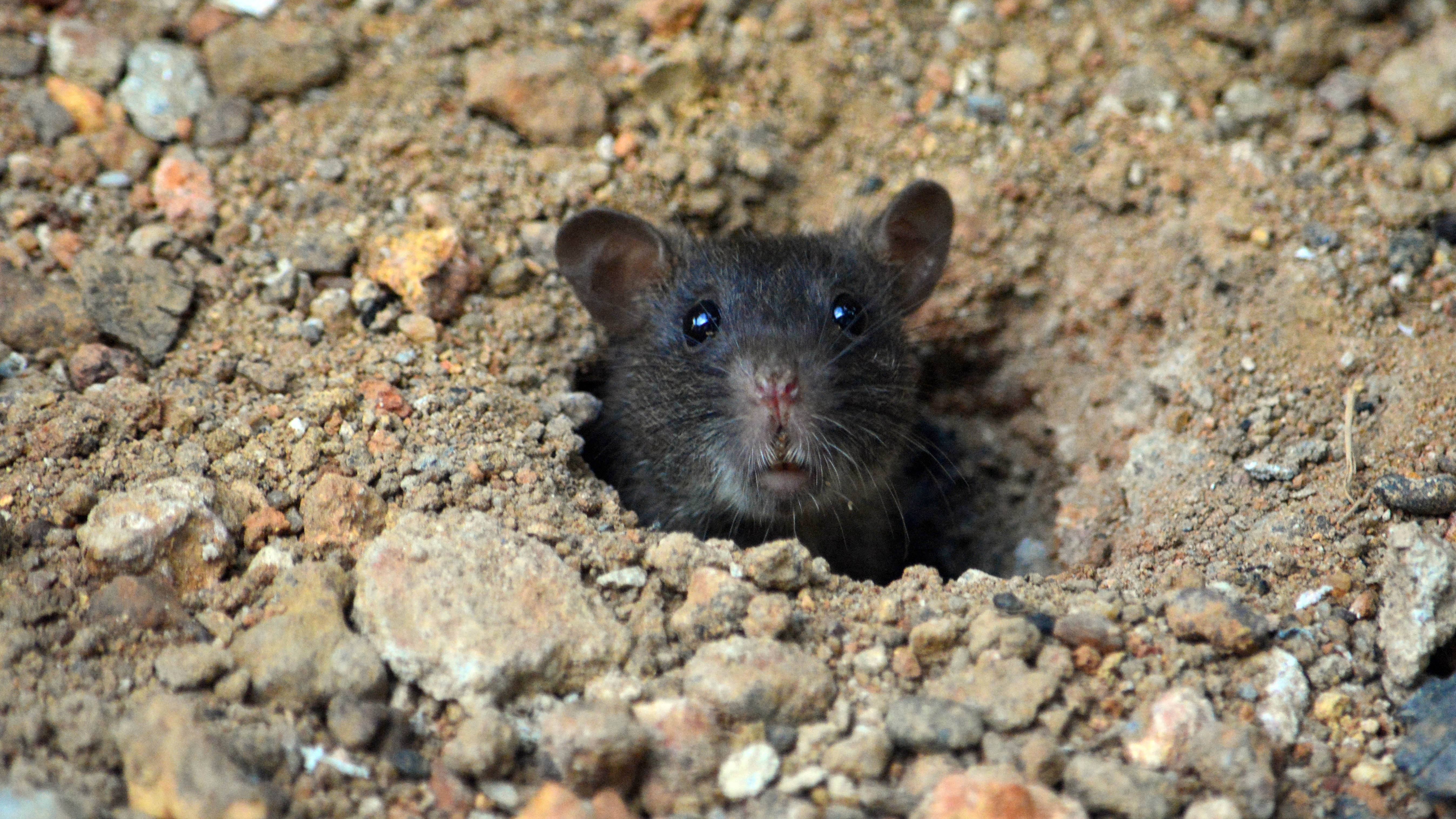
Nobody likes the idea of rats roaming around in their yard — particularly when they dig holes and destroy your lush lawn. That’s why it’s important to know how to get rid of rats quickly and safely.
With that said, be on the lookout for rat holes that are about 2.5 to 3.5-inches wide, and have smooth walls from frequent use.
Typically, rat holes can be found in sheltered places with easy access to food sources, such as crops or water. If you know for certain that rats are the culprits for your lawn holes, remove any food crops and standing water — checking around your yard for leaks such as a damaged garden hose.
Additionally, since rodents are always on the rummage for food, ensure all garbage cans and recyclable bins inside and outside your home are completely sealed with tight-fitting lids.
Snakes
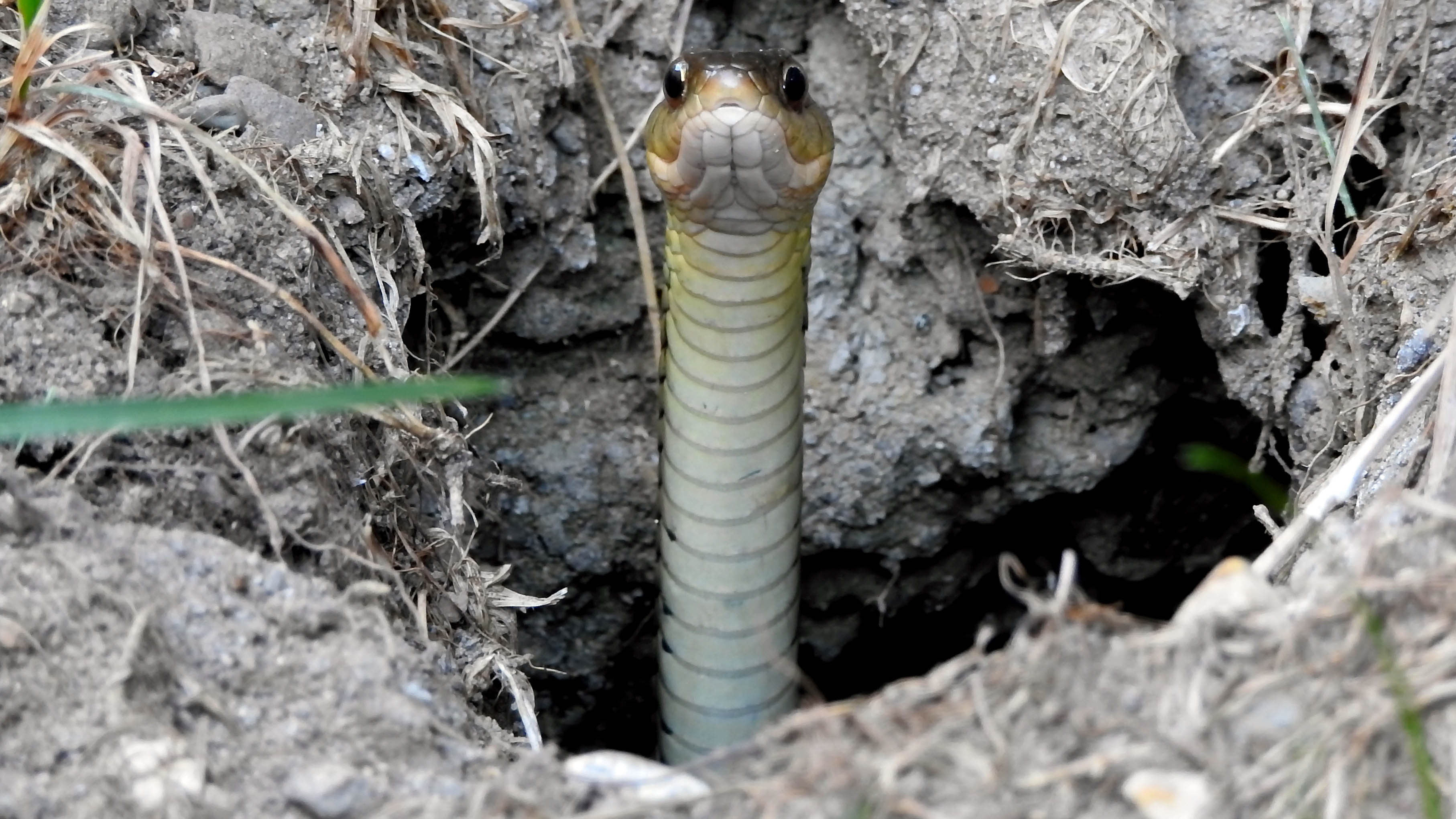
Most garden variety snakes in the U.S. are Garter snakes and Watersnakes at up to 20 inches and 42 inches long respectively.
And even if you haven’t spotted either of these lurking about, there are top signs that there are snakes in your yard.
One sign is finding burrowed holes in your lawn or soil. While snakes can’t technically dig their own protective holes, they will inhabit holes in the ground that are already there – often old nests created by voles or moles. Another sign to look out for is freshly shed snakeskin or snake droppings. These are key indicators that there's a snake living in the hole.
The best preventative action is to block all holes if possible. Filling with excess soil, or block the entrance with a rock, a piece of burlap or chicken wire.
Other tips include ensuring there are no entry points from garages or outdoor sheds. And keep your yard neat and clean, as snakes are attracted to wood piles, tall grass, trash, construction debris, and other dense environments.
However, if you believe you have a serious issue on your hands, it’s best to always call a wildlife or pest control expert to deal with snakes.
More from Tom's Guide

As the Homes Content Editor, Cynthia Lawrence covers all things homes, interior decorating, and garden-related. She has a wealth of editorial experience testing the latest, ‘must-have’ home appliances, writing buying guides and the handy ‘how to’ features.
Her work has been published in various titles including, T3, Top Ten Reviews, Ideal Home, Real Homes, Livingetc. and House Beautiful, amongst many.
With a rather unhealthy obsession for all things homes and interiors, she also has an interior design blog for style inspiration and savvy storage solutions (get rid of that clutter!). When she’s not testing cool products, she’ll be searching online for more decor ideas to spruce up her family home or looking for a great bargain!
You must confirm your public display name before commenting
Please logout and then login again, you will then be prompted to enter your display name.
